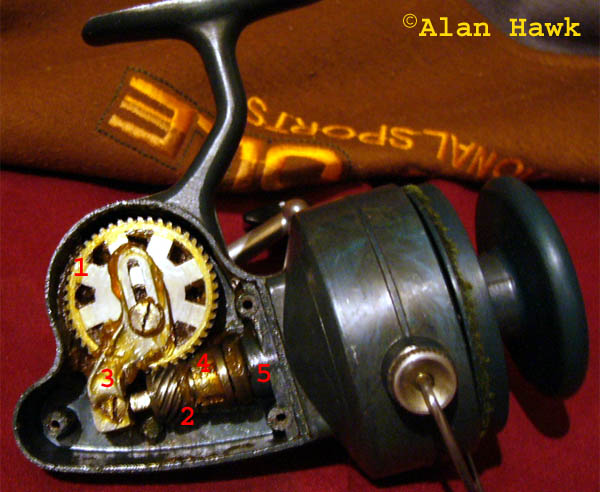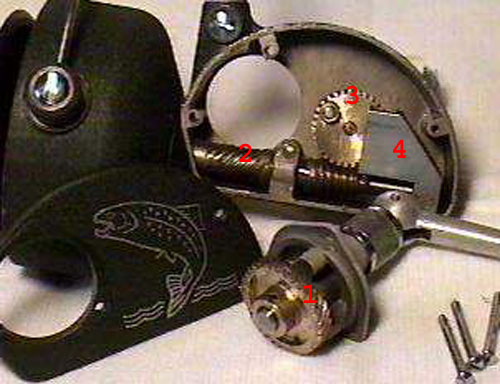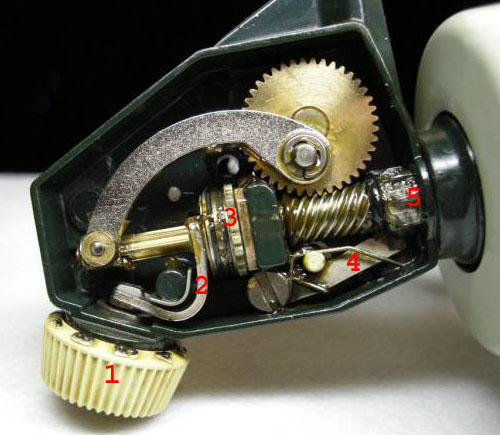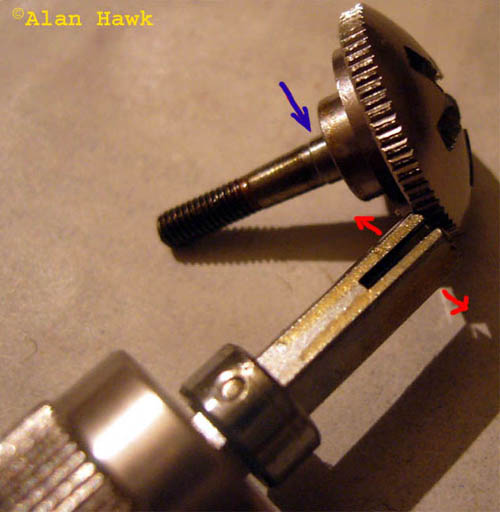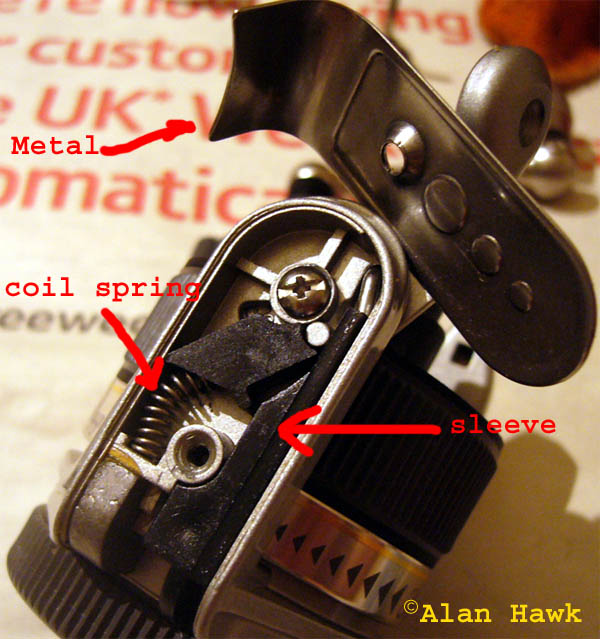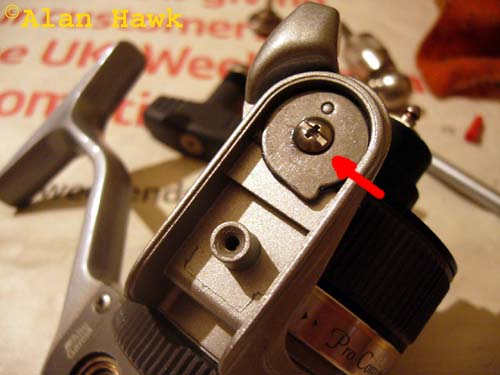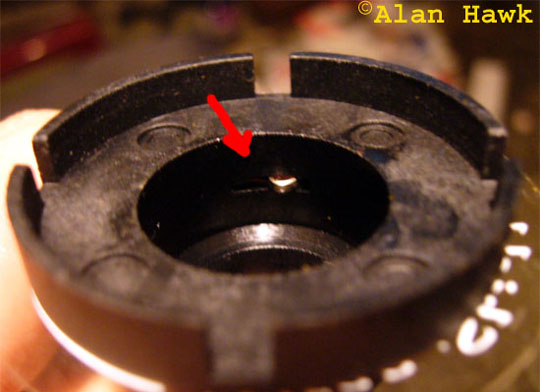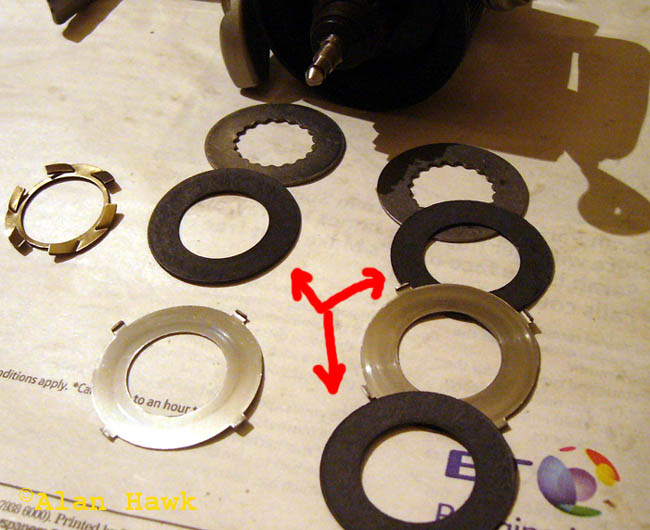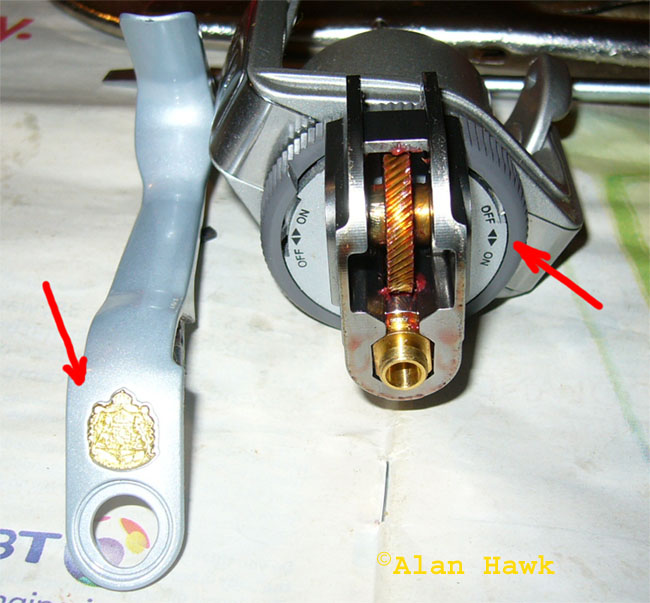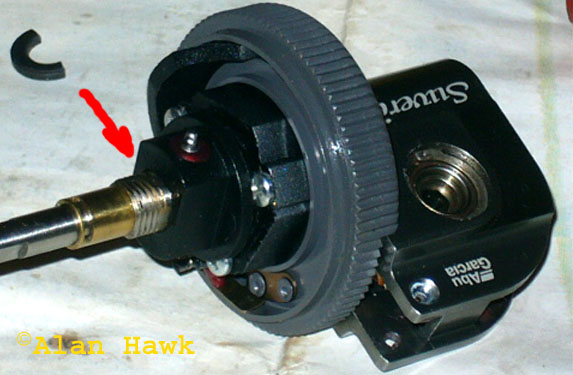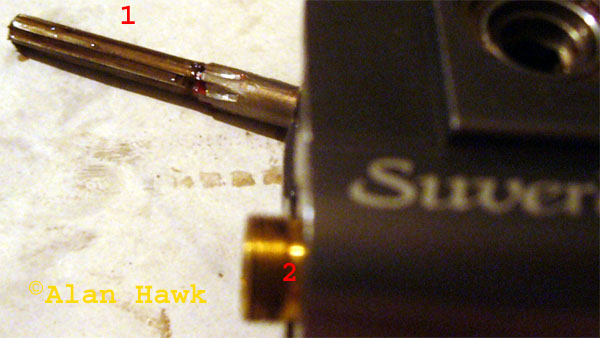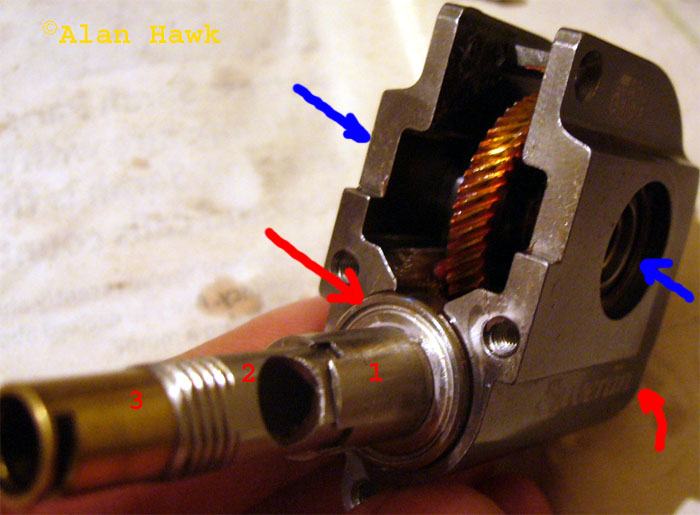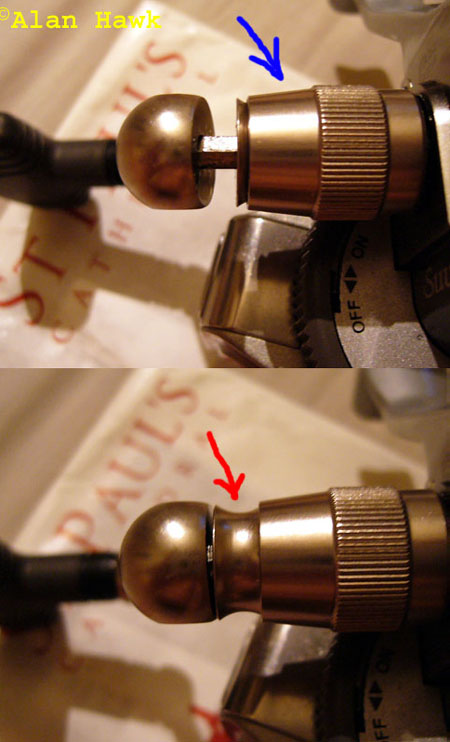Abu Garcia Suverän : The finest spinning reel ever made.
The following review is a
revised version of a review I wrote in 2002, titled "Suveran: The last
man standing". That original title reflected the fact that at time, I
believed that the Suveran was the last remaining spinning reel still
being built anywhere in the western world. Back then, Penn had just
been sold and production moved to China, Van Staal changed hands too
and there were no more reels coming out of their US factory, in
preparation for the eventual move to China where they are being made
now, and it seemed as if there were not going to be anymore spinning
reels built outside Asia. Things has dramatically changed since. Now
Zeebaas makes spinning reels in America, Accurate introduced their
American built TwinSpin spinning reel, and I've verified that Peerless
Bam are still building their world class spinning reels in France. In a
painful twist of fate, the Suveran was discontinued, Abu-Garica sold by
Swedish parent company Aritmos A.B to Pure fishing, and now they make
all their spinning reels in China.
I was recently asked by a
reader, who had just read another review of mine, about my all time top
3 spinning reels. What must have been 100s of reels that I've used
since I was 8 rushed into my head while trying to figure out which
three stand out on the top. The new Shimano Stella SW fought with the
2007 D-A-M quick FD over second and third positions, but there was no
fighting in my mind giving the #1 spot to the Suveran, as the finest,
most ingenious, and best engineered spinner ever made. The following
illustrates why.
This reel imitates no one. Abu
seems to have reinvented the wheel with the Suveran, after a run of
truly uninspired spinning reels. Basically, the Suveran is a small
sized all metal freshwater reel that came in four spool sizes. And I
say 'spool sizes' because the four models are the exact same reel with
different spools. Suveran 1000M , 2000M, 3000M, and 4000M all have a
5.2:1 ratio, and weighted between 357 grams (12.5 oz) for the 1000 to
390 grams (13.7 oz) for the 4000. The difference in weight comes from
the spools, the bodies are the exact same size and weight.
One was a dedicated luxurious
fitted box, with a high quality leather pouch. The Royal Warrant and
the text on the top of the box are embossed.
And the other was a simple
cardboard box made for "Center Drag" reels, with a sticker (!!!)
carrying the Suveran's name stuck on the sides. The pouch that came
with it was a cheap cloth one, and was made for the "Center Drag".
To the reel itself. The heart
of the Suveran is the 'screw gear', or 'worm gear' drive as it's more
commonly known. It is hard to pinpoint the first use of this system in
fishing reels. Early Hardy Altex spinning reels from the 1930s had a
primitive version of that worm gear drive, but the first reel to
perfect it was the Alcedo nearly a decade later. This is my Alcedo 2CS
gear box showing the main components of that gearing style.
1) Main gear
2) Pinion Gear
3) Oscillation cam
4) Gear adjustment nut
5) Ball race (works as ball bearings but balls are not caged)
The Alcedo was a thing of
beauty and precision. They made several models, most popular of which
were the 'Micron', '2CS', and the very rare gigantic 'Oceanic'
saltwater reel. They were expensive, hard to make and regulate, labour
intensive, and generally not commercially viable. That led to the
company's bankruptcy and liquidation.
The reel came in two types of packaging.
I used to think that the
cheaper packaging was for the American market only, but then I spotted
several ones in that packaging in Europe, some of which were originally
bought in Germany and Sweden. Currently the ones in the luxurious box
are harder to find, and command a higher price than the other packaging.
Germany's DAM (Deutsche
Angelgeräte Manufaktur) picked up the worm gear concept and refined it
even more, releasing their 'Quick Super' in 1954. The 'Super' had a
bronze main gear (1) and a steel pinion (2). Extremely powerful, but
the pinion was prone to rust and corrosion, particularly in saltwater.
They kept using steel and not stainless steel for their pinions up till
their very last German made reel, the Quick Royal MDS (Magnetic Drag
System) of 1994. Back to the 'Super', it also had a separate gear (3)
with a modern type transverse cam (4) for line lay, as opposed to the
simple direct cam of the Alcedo. The result was slower spool cycles,
closer line coils, and increased casting distance. Now the main gear
was free of cams, the winding handle could be changed to either left or
right sides.
The final product was
unbelievably durable that most of these reels are still in good working
condition today. Mine has been used continuously by three generations
since it was purchased in 1959, had the occasional bail spring and drag
washer change, but the gears are still tight and ready to go for
another 50 years!
Lesser important reels
followed. Penn made their 704, 705, 710 and 712 spinning reels using
Worm Gears drive, Hardy of England took another shot at it with the
'Exalta MKI', obscure makers from Switzerland and Italy made several
forgettable reels, until the next big thing came with Abu's Cardinal
circa 1965
The Cardinal could only be described as brilliant. That photo of a later Cardinal 33 shows the top engineering of that reel.
1) The rear drag knob
2) Pressure cam
3) Clicker gear
4) Anti reverse dog
5) Anti reverse gear
Here we have a drag that is
hidden inside the safety of the gear box away from sand and water,
coupled with a groundbreaking anti-reverse: Up till that point most
spinning reels had anti-reverse mechanisms that stopped the main gear.
But because the pressure from the fighting fish is transferred through
the rotor to the pinion, an anti-reverse that stopped the main gear put
the meshing area between pinion and main gear under an undue stress.
The Cardinal came with an anti-reverse that worked instead on teeth cut
on the pinion, therefore taking away the potentially deforming braking
load from the main & pinion gears' contact area.
Understanding the benefits of
the worm gear system is important in order to appreciate the perfection
of the Suveran. That gearing is the most durable of all gearing types,
and it is also the strongest because the contact area between the drive
and pinion gears is approximately 3 times the contact area of bevel
gears (Mitchell 488/498, Van Staal, Penn 720/722, etc), and nearly 4 times that
of Hypoid gears (almost every modern spinning reel). Worm
gears also run very smoothly because of their sliding action, there is
no rattling and no shock waves sent through the teeth. Also very useful
is the fact that gear ratios can be increased or decreased by changing
the angle of the spiral teeth without the need to change the size of
the gears. Their only drawback is a slight loss of efficiency compared
to other gearing systems. That loss is considerable in ratios higher
than 8:1, but at slower ratios (as is the case with spinning reels),
the efficiency loss is negligible.
To the reel itself.
The Suveran's bail arm is
metal. Very admirable for such a small reel when many larger all-metal
reels have plastic bail arms. At that point I started thinking that
this reel might in fact be able to handle bigger fish than other reels
in its size class. In hindsight, my assumption was correct.
The line roller is wide and
braid friendly, and surprisingly, I found a tiny ball bearing inside
it. Do not try to remove it because it is press fitted inside the
roller and won't come out unless damaged. This is why the bearing does
not appear in the exploded diagram, as it is an integral part of the
roller. This seemingly insignificant feature eliminates any axial play
in the line roller. Other makers are forced to place two bearings
inside the roller to achieve that. This is the first clever engineering
feature I found on this reel. Start counting because there are more
unique engineering features in this reel than in any other that I have
seen.
The curved covers of the bail
mechanism are metal. Metal is very hard to fit around curved areas,
therefore most makers who use metal for this part use a straight strip,
and others just give up and make it in plastic. Shimano Stella and
Daiwa Saltiga are two of those world class all metal reels that use
plastic to make this cover. This is how hard it is to fit metal around
curves, but Abu Garcia went for metal sparing nothing on this beautiful
reel.
A sleeve covers the metal bail
trip cam. The reel would work perfectly without it, but with it,
opening the bail is a very silent and positive feeling operation. The
spring is a long life coil one. You know of course what happens to the
regular wire springs and how often they break and wear out. Not exactly
a world first, but at the time the Suveran was made, only very
expensive top of the tree reels had coil springs, like Team Daiwa TDX
HIA and TDZ.
The other arm of the rotor.
Pointed is the counter weight used to eliminate rotor wobble. At that
time computer balanced rotors were still years away, and most makers
put a large lead weight right under the spool. In the Suveran it's
elegantly hidden, and it double tasks as a bail stop because of that
small claw at its bottom. Keeping count of the brilliant engineering
features?
Moving on to disassembling the
body, the reel proved to be so different I had to stop and think for a
while before I proceed on several occasions. The reel is not
complicated, but very unique that I had to look at the parts diagram
many times, and it took me longer than I expected to complete the job.
Looking at a reel's diagram in order to disassemble is something I have
not done since I was 12!
Underneath the spool lies the
hub and a 'drag shield'. Not sure what it is supposed to shield
against, but it's there anyway. Just don't get a false sense of
security and expose it to dirt or water splashes because that shield is
not going to stop either.
The drag runs on a nice quality
ball bearing. Again, at that time only obscenely expensive Shimanos and
Daiwas had ball bearing drags. The bearing fits the hub perfectly
tight, exhibiting a close manufacturing tolerance.
In general, the ball bearings
used in the Suveran are of a very high quality. I would not be
surprised if they turn out to be German made bearings. The tolerance of
the ball races is extremely tight and axial play is minimal. If I had
to make a guess, I'd say those bearings are ISO Class 4 or higher.
Took me a while to locate, but here is the nifty little drag clicker.
The drag washers are made of
Carbon. Those large carbon washers dissipate heat quickly and won't
change the drag setting from overheating during a fight. I am not aware
of any other reel that used carbon as a drag material prior to the
Suveran, but I know that later, Shimano & Daiwa decided that Carbon
is superior to anything else and used it on their high end reels,
something they still do to this day.
Is it getting clearer now why I called it the most ingenious reel ever made?
Suveran's drag is the biggest
used in a spinner in relation to a reel's size. To demonstrate it, I
took out the drag of a massive reel that has the drag as an integral
part of the model's name: Fin-Nor Ahab Mega Drag #20. The net surface
area of a single washer from the Suveran was exactly 942 mm squared,
while the Mega Drag's washer measured 1495 mm squared. It means that
the Suveran's drag is 63% the area of the Ahab's drag, even though the
Ahab weighs more than twice the Suveran, and its spool alone is nearly
as big as the entire Suveran!
Another refining touch:
a rubber ring that goes through a machined slot in the pinion, and
keeps the main shaft pulled against the inside of the pinion. Less
shakiness and quieter winding, and again, something the reel could have
done fine without, but that's the kind of classy touch that sets the
reel apart.
The main shaft is non-magnetic
stainless steel. Non magnetic steel indicates a higher quality and more
costly structure. That steel also resists corrosion and wear better due
to the amount of Chromium and Nickel in it. If you have a stainless
steel Rolex watch, its case and bracelet will not attract a magnet if
you try. That is top quality expensive non-magnetic stainless steel.
Haven't I told you they spared nothing making the Suveran?
Also visible is a multi
position lock to keep the rotor's nut from getting loose. Much nicer
and easier to install than a simple screw that requires you to align a
broad side of the nut with it.
The box gear before I took it
apart. How many reel makers you know of hold a real Royal Warrant from
a real King? This kind of charm is exclusive to Abu-Garcia.
The other arrow points to the
large disc that switches the anti-reverse on and off. The text on it
tells you which way does what. The position of the switch few
millimeters from the center drag disc makes it easy to switch the
anti-reverse on/off at the same time your other finger is adjusting the
drag during a fight.
This bit is #3 in my top 3
engineering breakthroughs in the Suveran. It is a fact that worm gear
oscillation offers the best line lay on a spinning reel. The stroke
could be as long as the maker wants, the line lays in close coils, and
the cycle rate could be easily controlled during manufacturing. Yet it
requires many parts, special housings, two extra gears, and an enlarged
gear box to house all of these. Abu engineers started with a white
sheet and managed to do it with just 4 very effective parts.
Incredible if we know that in Shimano Stella it requires 19 parts to do
the same job, and we are talking about the simplified 2008 model, the
older Stella needed 26 parts to do it!!
The sophistication continues:
the main shaft, fluted at the rear (1), goes through an internally
fluted brass nut (2) at the end of the gear box to stop the shaft from
rotating under heavy loads. I can think of at least 10 ways to do it
cheaper and simpler, but Abu seemes to have chosen quality engineering
and refinement over simplicity and cost effectiveness. Exactly the same
mentality used in building a luxurious Swiss watch.
They could have left the pinion
alone and it would've been alright. But no, they had to insert a brass
tube (1) inside the pinion to provide smoother action and protect the
shaft from wear.
Also seen is the instant anti-reverse clutch switch (2), and the disc switch spring (3).
A closeup of the one way clutch
showing the little V shaped springs that keep the steel cylinders in
the locked position. There is another type of clutches which uses no
springs and would live longer, but it gives a slight back play before
it locks. I personally prefer the positive lock and complexity of the
spring type clutches.
In every spinning reel I've
laid my hands on, the pinion was a just a single piece of metal,
regardless of the configuration, size, or price. The Suveran's pinion
is composed of 3 layers. First (2) is a very tough and wear resistant
stainless steel layer that has the teeth which mesh with the drive
gear. A second layer (1) is a lightweight tube that has the bearing
stop on one side, and works as an inner race for the one way clutch on
the other side, providing a larger surface area for the clutch
cylinders to lock the pinion securely. And finally, a third layer (3)
which is a brass tube bedding for the shaft as described earlier. A
pinion that has more work on it than many complete reels, illustrates
what the Suveran concept is all about: Absolute refinement.
The two red arrows point to the
two ball bearings that the pinion runs on (only one bearing is visible
from this angle), and the blue arrows point to the bearings of the
drive gear (also only 1 visible). The bearings are of the same top
quality as discussed earlier.
Speaking of bearings, the
bearings that carry the drive gear are fitted on each side, then held
in place by that small elegant lock. And I know I'm repeating myself,
but pushing the bearing down that housing is an absolute pleasure due
to the tight tolerance. The housing just hugs the bearing with no play
what so ever, yet you don't have to push hard on it. Unbelievable
precision!
The entire drive train.
1) Main Gear, we'll get to it shortly
2) Multi layer pinion with a ball bearing at each end.
3) The arrows point to the two slim fitted locks that hold the bearings in place.
4) The internally fluted nut that keeps the shaft from rotating.
5) The worm oscillation grooves.
6) The fluted part of the shaft.
As if the pinion wasn't impressive enough, the main shaft shows an astounding amount of machining work too.
Now we have reached my #2
favorite engineering feature of the top 3 in this reel: The body. They
started with a solid forging of 6061-T6 aluminum alloy, then they made
the frame out of it through Extrusion. This is a way of forming metals
that involves pressing the raw forging through a die to its desired
shape. Unlike casting, the part keeps its molecular integrity, and
unlike machining, it becomes very dense and its surfaces are left with
a shiny finish. Here is a sketch from a set that was released in Sweden
during the initial marketing of the Suveran, showing the formation of
the body through extrusion.
After extrusion, the body is
machined to create screw threads, bearings housings, and cut the top
leaving only the bridge, pointed to by red arrows. That bridge, an
integral part of the body, is what makes this gear box virtually
indestructible. There are no side covers to crack open when the gears
are under massive pressure, and the only way gears could disengage is
to somehow tear the 44000 lbs/sq.in strong one piece frame.
Another sketch showing the
pinion and drive gear held securely, each by two bearings, inside the
one piece body. For the past five years I've been describing this as
"the strongest gear box ever used in a spinning reel", and I had yet to
see anything that could change my mind.
If the genius four pieces
oscillation was my #3 favorite feature, and the powerful gear box my #2
favorite, my #1 is quite justly my favorite engineering feature of any
reel, not just the Suveran:
When I check out a reel, one of
the first things I examine is how the handle's axle is attached to the
drive gear. In reels with ambidextrous handles, a strong and reliable
mechanism is required to secure the handle to the gear on either side,
leaving no play. There are generally three types of such mechanisms.
First system is shown on the
left in the above image (1), where the drive gear is permanently fixed
to the handle's axle. This is, naturally, the strongest and most secure
method, but changing the handle to the other side requires taking out
the gear and a part of the body, and tools must be used.
Second system is in the center,
where the handle's axle (2) is hexagonal, and it goes through a
similarly shaped female shaft in the main gear, then gets secured on
the other side by a screw. Sometimes the screw will have a small
pointed bushing (3) that gets wedged between the axle and the inner
wall of the gear's shaft to prevent play. A user friendly system, but
it puts parts under immense stress. The screw's head is tightened
against the gear's shaft, the bushing is squashed between the gear's
wall and the handle's axle, and quite often the screw would get loose
and needs re-tightening. But the biggest disadvantage of this system is
that the main gear (or at least its shaft), must be made of cast
aluminum in order for the female hexagonal shaft to be formed. And a
cast aluminum gear (or gear's shaft), automatically puts the reel down
the chain in terms of quality.
Third system is shown on the
right in the above image, where the handle's axle is screwed into the
gear. The handle will have two sets of threads, one is
counter-clockwise to be secured to the left side (5), and another,
clockwise, to be secured to the right side of the reel (4). This system
eliminates play, but the threads are under a lot of pressure at all
times, one of the threaded parts must be thinner than the other,
meaning that it will be weaker, and each set of threads is limited to
half the length of the axle.
The Suveran adapts the second
system, the hexagonal axle, but only after they redesigned it to
eliminate the disadvantages and create new advantages for it! What they
did was that they split the axle's tip into two halves, then they
machined the securing screw so that it would have a part near the end
that is larger in diameter than the rest of the screw. That thicker
part is pointed to by the blue arrow.
When the handle is attached and
the screw is tightened, that fat part at the end forces the two halves
of the split axle apart in the directions pointed to by the red arrows.
And when the axle is forced to split, it fills the slightest clearance
between itself and the female shaft achieving a perfect fixation that
rivals that of the first system, where the gear is permanently attached
to the handle's axle.
To demonstrate that, I attached
the gear to the handle and tightened the screw without much force, and
the result could be seen in this photo: the handle's axle is perfectly
attached, yet there is still a space left between the screw's head and
the gear's shaft. The screw's head is not touching anything, thus is
under no pressure as in regular systems. There is zero play, and that
lack of play added to the fact that the screw's head is not in contact
with anything, keep the system secure with no chances of it getting
loose. It is not about stressing parts against each other, but rather
changing the diameter of the split axle to fill any clearance inside
the gear's shaft, making it virtually an integral part of it. And this,
gentleman, is genius creativity and top notch engineering in action.
The gear's shaft, which
contains the female hexagonal tunnel, was not made from cast aluminum.
Rather they managed to somehow make it from the same expensive
non-magnetic stainless steel (I'd imagine through cold forging), then
embed it into the heavily machined bronze main gear.
Right side view of the reel, reassembled and ready to make me as sad as it has been making me for the past few years.......
Why sad, you ask? Because it's
over. There will be no more such quality coming out of Sweden, where
Abu truly belongs. I have no idea why this happened. Was it because
they made reels that could serve the owner for 50 years and people did
not have to buy more? Could it be because we, consumers, became used to
cheap generic stuff that has no character what so ever? I might never
know, but I know that every time I use the Suveran I'll feel sad
thinking about what could have been. Had they made them in larger sizes
with minor modifications to handle saltwater, the USD $1000 Shimano
Stalla would be struggling to catch up with Abu Garcia Suveran 8000M.
Had they kept developing them using that same ingenuity, I can only
imagine how breathtaking the 2008 Suveran could have been.....
My only conciliation is that
that golden era ended with not just any reel, but with what undoubtedly
is the finest spinning reel ever built. At least in my book.
Alan Hawk
November 2008
Instead of an extra gear and
several bushings to generate motion, they fixed the unit (red arrow) to
the revolving rotor, using its motion. And instead of a separate
oscillation shaft and its many supporting parts, they machined the
grooves right into the main shaft. The unit has only a bearing (1), a
pawl (2), and a tiny spring (3). A total of 4 parts doing the job
perfectly leaving the gear box as small and compact as possible.
A final touch of destination:
Like most other reels, the
Suveran's handle is collapsible for transportation & storage. In
other reels, a nut on the axle is turned in order for it to move to the
left along the axle until it locks the handle in the fishing position.
But, as many might have experienced, with use, the nut gets loose and
the handle starts to shake and you need to tighten it again. The makers
of the Suveran did not follow the herd, they did put a nut on the axle
(blue arrow), but the nut itself does not move left to lock the handle.
When you turn it, a neat pressure disc emerges from inside the nut (red
arrow) and keeps extending until it secures the handle in the fishing
position.
This by itself is elegant enough to be considered a unique feature. But the real advantage here is that the pressure disk does not
rotate, and you can't turn it if you try. It is designed to only extend
outwards without revolving. Accordingly, and because the part that
touches the handle can not rotate, the system will never get loose or
need re-tightening no mater what you do with the handle. Just like
that, every single part of this reel is perfectly designed it hardly
has anything in common with spinning reels as we know them.
Even if Abu resumed making them
in their Chinese factory, it will never be the same. The romance,
nostalgia, and history associated with Swedish designed and built reels
is nothing all the advanced machines in the world can recover.
Copyright 2005 - 2008 All rights reserved realsreels.com




